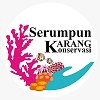Growth Pattern of Rabbitfish (Siganus Guttatus) in Seagrass Habitat in the Tukak Waters
DOI:
https://doi.org/10.61548/cmj.v3i1.52Keywords:
Siganus guttatus, fish growth, length-weight relationship, environmental factors, seagrass ecosystemAbstract
The Baronang fish (Siganus guttatus) is an economically valuable species commonly found in seagrass ecosystems, which serve as critical habitats providing food, spawning, and nursery grounds. This study, conducted from June to August 2024, aimed to examine the length-weight relationship, growth patterns, and the influence of environmental parameters on Baronang fish growth. Fish samples were collected using beach seines of various mesh sizes. The length-weight relationship in June followed the model W = 0.12L².19 (R² = 0.72), in July W = 1.07L⁰.34 (R² = 0.99), and in August W = 2.72L⁰.674 (R² = 0.94), indicating varying degrees of correlation across months. Growth analysis using the von Bertalanffy model showed an asymptotic length (L∞) of 154.00 mm and a growth coefficient (K) of 0.51/year. In August, the estimated L∞ was 19.95 cm, K = 1.01/year, and t₀ = 0.176. The fish reached a length of 88.97 mm in the first year and 150.95 mm by the sixth year, with growth slowing down after this period. Environmental parameter analysis revealed that temperature had a significant positive effect on fish weight (B = 14.664, p < 0.001), while salinity (B = -5.920, p = 0.005) and dissolved oxygen (DO) (B = -28.357, p = 0.001) had significant negative effects. These findings highlight the importance of environmental conditions in regulating the growth of Siganus guttatus in seagrass ecosystems.
Downloads
Download data is not yet available.
Downloads
Published
2025-06-30
Issue
Section
Articles
License
Copyright (c) 2025 Coastal and Marine Journal

This work is licensed under a Creative Commons Attribution-ShareAlike 4.0 International License.

This work is licensed under a Creative Commons Attribution-ShareAlike 4.0 International License.
Copyright Transfer Terms
- The author in submitting online understands that if the manuscript is accepted for publication, the copyright of the manuscript will be given to the Coastal and Marine Journal as the publisher of the journal.
- Copyright includes the exclusive right to reproduce and distribute articles in all forms of media, including reprints, photographs, microfilm and other similar reproductions, as well as their translations.










